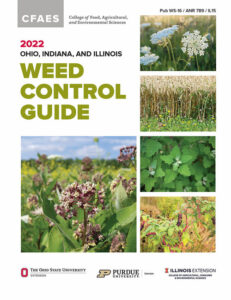US EPA Issues New Dicamba Application Restrictions for Illinois Soybean
The United States Environmental Protection Agency (US EPA) issued new state-specific application restrictions for dicamba-containing products labeled for use in Illinois dicamba-resistant soybean varieties. The three dicamba products (i.e., XtendiMax, Engenia, Tavium) cannot be applied after June 12 or the V4 soybean growth stage, whichever comes first. We remind applicators these new restrictions are in addition to the existing application restrictions imposed by the Illinois Department of Agriculture that include:
- A pesticide containing dicamba shall not be applied on soybeans if the air temperature at the field at the time of application is over 85 degrees Fahrenheit or if the National Weather Service’s forecasted high temperature for the nearest available location for the day of application exceeds 85 degrees Fahrenheit.
…






 …
…